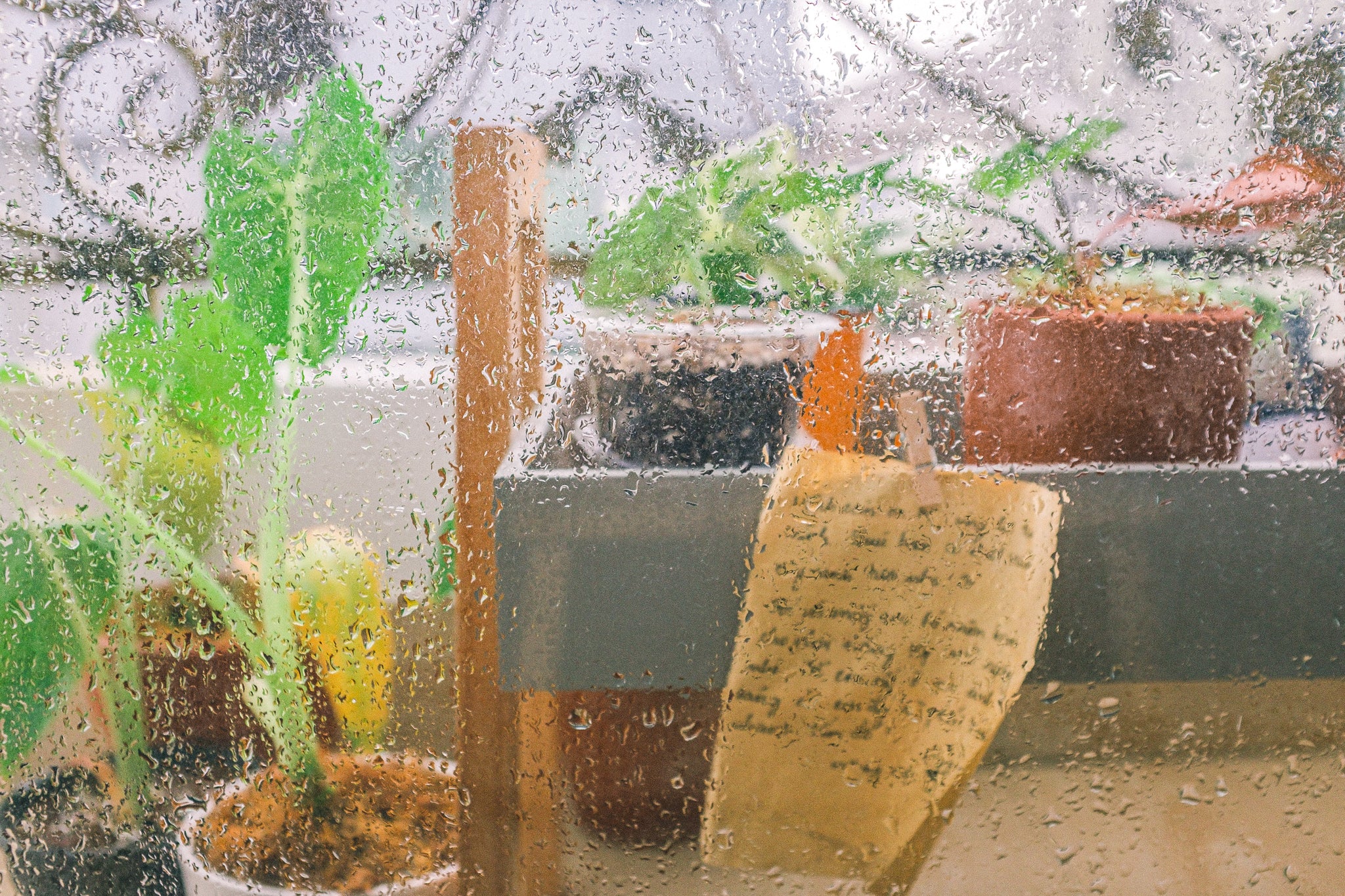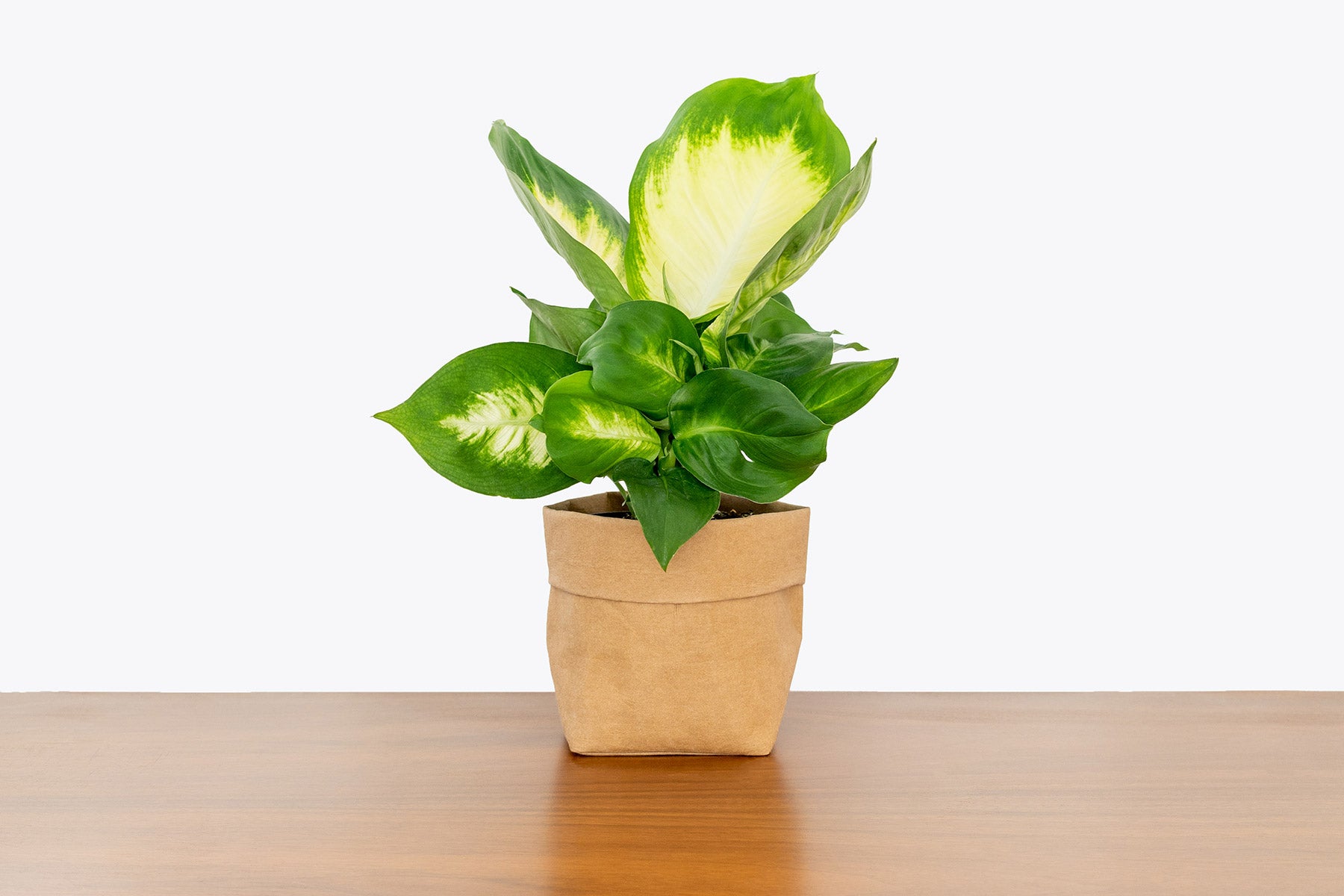
How to Take Care of Your Palm
Interestingly enough, in Victorian times, palms were equated to high social status, where they were linked to wealth and success if they were seen in your home. Nowadays, they still make any space seem luxurious as their fronds can make you feel as though you are sitting in the tropics, even though you are just in your own living room. Not only are they eye-catching and beautiful, but most varieties of palms also have fairly simple care routines, which sounds like a win-win to me!
△ 8" Cat Palm
Palms belong to the Arecaceae family, which includes a vast and diverse selection of plants. Their large, compound, evergreen leaves are known as fronds, and they usually grow in an arcing shape, filling any plain space with character. We often think of palm "trees" when we hear the word palm, but the majority of varieties that I will be discussing in this care guide have more of a shrub-like growth, although there are exceptions such as the Coconut Palm, Ponytail Palm, Majesty Palm, or Sago Palm, which will have some form of stump eventually.
With all that being said, let's get in to how to care for your new palm!
Light Requirements
The majority of palms enjoy bright, indirect light for the majority of the day, although there are varieties that fall in both the lower light category as well as the higher light category. This sounds like a bonus to me because there is a palm for every spot in your home!
△ 6" Ponytail Palm
Let's start with the palms that can handle lower light. Although I say low light, this does not mean no light, and they will not retain the shape in which you get them from the greenhouse or garden centre. They will adjust to the conditions of your home, meaning there will most likely be leaf loss, some minor browning, and slow growth. The majority of palms are already slow growers to begin with, so the less light they receive, the slower their growth will be.
Remember, low light does not mean no light!
These palms include: Bamboo Palms, Parlour Palms and Ponytail Palms. They will be happiest in a location that receives medium to bright indirect light, but they are more forgiving than your other palms. The following light conditions are what these palms can handle, in order of lowest to brightest light:
- Next to a North facing window
- About 3 - 6 ft. back from an East, West, or South-facing, unobstructed window
- Next to a South, West, or East-facing window that has an obstructed view (from a tree, neighbouring condo, overhang, etc.)
- Next to an East-facing window
- Next to, or close by, a South, Southwest, or West-facing window that has sheer curtains for some bright, indirect light (keep in mind, they cannot handle full sun so the curtains keep the leaves from getting burned by the sun)
On one hand, the brighter light these palms receive, the more compact and full their growth will be, and on the other hand, the less light they receive, the thinner and more stretched out their growth will be. Just remember this as your plant grows into its space!
The brighter light palms include Cat Palms, Sago Palms, Ponytail Palms, Areca Palms, and Majesty Palms. They will be happiest in a space that receives bright, indirect light! You may notice that Ponytail Palms are mentioned in both the low and bright light list and that is because they are quite forgiving, but brighter light is almost always better. The following light conditions are what these palms can handle, in order of lowest to brightest light:
- Next to a South, West, or East-facing window that has an obstructed view (from a tree, neighbouring condo, overhang, etc.)
- Next to an East-facing window
- Next to, or close by, a South, Southwest, or West-facing window that has sheer curtains for some bright, indirect light (keep in mind, they cannot handle full sun so the curtains keep the leaves from getting burned by the sun)
- One exception: Majesty Palms can handle some sun! Just make sure it is not for an extended period of time.
Special Note: Coconut Palms are not mentioned here because they need high light, that means full sun, and will not be happy without it!
Watering Requirements
When it comes to watering, most palms do not like their soil to dry out. They have such thin foliage that the moment they don't have enough moisture, their fronds turn brown and crispy. Although this is very common in houseplants, and not always a bad thing as there is only so much we can do about our dry homes, we want our plants to be as happy and healthy as possible! If you are overwatering your palm, the leaves will start to turn yellow, so just keep an eye on that as well.
Two exceptions to this: both Sago and Ponytails Palms prefer their soil to be almost fully dry before watering again!
Watering instructions are pretty straightforward for most palms: water your plant when the top quarter of the soil is dry to the touch. In the summer, this could mean that you have to water your plant a couple of times a week, depending on how much light it is getting and how quickly the soil is drying out. In the winter, this could mean not watering for 7-10 days as there is a lot less growth in the winter and soil tends to dry out slower. Always keep an eye on your plant and its needs as everyone grows their plants in different conditions.
△ 6" Parlor Palm
If you really feel like spoiling your plant, which you should every once in a while of course, use rainwater or distilled water to water your plant, they tend to not enjoy tap water too much and that can also cause browning around the tips of the leaves. It’s also a good idea to shower off your leaves every once in a while, as this can wash off any dust that has accumulated or any potential pests as well.
Humidity
Palms love humidity and they will not tolerate drafts. Now don’t get us wrong, they can live in not the most humid conditions, but they will definitely be more prone to browning of their leaves and maybe even more pest prone if you are not careful. Keep them away from any drafts, such as cold windows in the winter or any heating/air conditioning vents.
To increase the humidity in our dry homes, especially during the winter, you can either mist your plants, or, if you have the extra money in your budget, you could purchase a humidifier. Keep it in the room that your plant is in but it will increase the general humidity in the whole room, which your other plants will appreciate as well. You could also place your plant on a bed of pebbles just covered with water. This allows the water to evaporate, raising the humidity in the air around your plant, while not letting it sit in water for an extended period of time.
Doing all of this will still not guarantee you perfect, pristine leaves, but it will provide the best environment your home can provide. Even in the wild, leaves yellow and crisp over time!
Fertilizer
Palms are very light feeders and don’t require too much when it comes to fertilizing. It is best to fertilize once a month through the Spring and Summer months and then do not fertilize throughout the Winter. Just use a generic house plant fertilizer, at half strength, that any greenhouse, garden centre, or plant shop offers!
Toxicity
Unlike the majority of houseplants, most palms are non-toxic to ingest, by both pets and children! Although it is always recommended to keep from ingesting any houseplants, you can feel comfortable and safe having these beauties around your home in the potential case where someone feels like having a snack.
The one palm that is very toxic to both humans and animals is the Sago Palm
Common Pests & Problems
I want to go over a variety of potential problems and scenarios so that you are fully equipped to deal with whatever problems your palm could throw your way! Although the list isn't very extensive, there are a few issues that palms typically experience throughout their lifetime if you don't stay on top of their care.
Spider mites
Spider mites loves all palms. You will often see a sticky residue on the undersides of the leaves and tiny webbing all along the leaves. Wash the plant off and allow the leaves and stems to dry off, then treat the entire plant (stems included!) with a Neem oil mix or a spider mite spray you can get from your local garden centre or plant shop. You can read more about how to get rid of spider mites here.
Brown and crispy fronds
If the leaves aren’t dying off just because of age, the plant is probably under watered, or there could be a salt build-up. Water more often than you have been and start using filtered, distilled, or rainwater. Also, if you increase the humidity in the room, your plant will love you even more.
Yellowing fronds
If the leaves aren’t dying off just because of age, the plant is probably overwatered. Water a little less often than you have been, changing it little by little so as not to shock your plant.
Drafts
Palms are very susceptible to drafts, so keep your plant away from any open doors in the winter, cold windows, heating vents, air conditioners, or radiators as your plant will not enjoy that experience one bit.
Fungal diseases
Although this typically happens when they are outdoors, palms are quite susceptible to fungal diseases, such as Lethal Yellowing. It is not a very common occurrence at all but definitely something to keep in mind when you are assessing any problems with your plant.
With all that being said, good luck with your new plant! We are sure you will give it the best home that you can.









